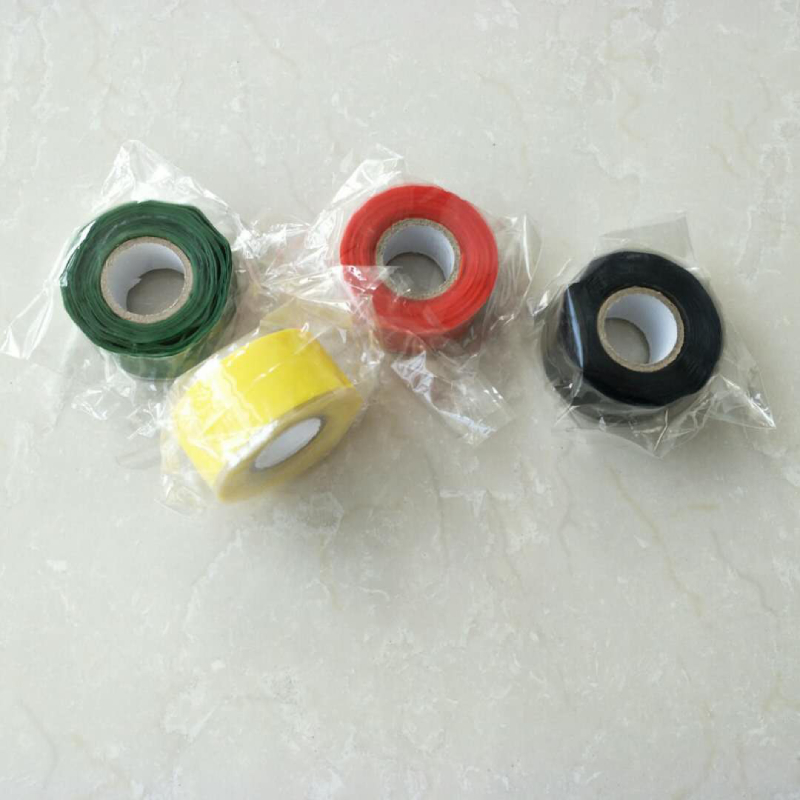Neoprene Insulation Tape A Comprehensive Overview
In today's world, where energy efficiency and safety are paramount, neoprene insulation tape has emerged as a vital tool in various applications. This versatile material is synthesized from polychloroprene, a type of synthetic rubber renowned for its resilient properties. In this article, we will explore what neoprene insulation tape is, its benefits, applications, and tips for proper usage.
What is Neoprene Insulation Tape?
Neoprene insulation tape is a kind of electrical tape that possesses excellent insulating and protective properties. It is highly resistant to moisture, chemicals, and extreme temperatures, making it suitable for various environments. Neoprene itself is a weather-resistant material, which means that the tape can function well in both indoor and outdoor settings. This durability makes neoprene tape a preferred choice for those seeking a reliable solution for insulation and protection.
Benefits of Neoprene Insulation Tape
1. Thermal Insulation One of the primary features of neoprene insulation tape is its ability to withstand extreme temperatures without degrading. This makes it ideal for insulating wires and cables in heating applications where temperature fluctuations are common.
2. Water Resistance The hydrophobic nature of neoprene prevents water from penetrating, shielding electrical components from moisture that could lead to short circuits or corrosion. This characteristic is particularly beneficial in outdoor applications or areas prone to high humidity.
3. Chemical Resistance Neoprene exhibits resistance to a variety of chemicals, including oils, solvents, and fuels. This property allows it to be used in automotive and industrial environments where exposure to harsh substances is frequent.
4. Flexibility and Conformability Neoprene insulation tape is easy to apply because it is flexible and can conform to irregular shapes and surfaces. This eliminates the need for additional fittings or reinforcements in many cases.
5. Adhesion The strong adhesive backing ensures that the tape sticks well to surfaces, providing a long-lasting seal that can withstand wear and tear.
Applications of Neoprene Insulation Tape
Neoprene insulation tape is widely utilized across various industries. Its applications include
neoprene insulation tape

- Electrical Insulation Primarily used for insulating electrical wires, the tape is essential in preventing electrical leakage and short circuits, ensuring the safety of electrical systems
.- Automotive Industry Neoprene tape is beneficial for insulating wiring, sealing joints, and protecting components from environmental factors, thus enhancing the longevity and reliability of vehicles.
- HVAC Systems In heating, ventilation, and air conditioning systems, neoprene tape is employed to insulate ducts and pipes, improving energy efficiency and preventing heat loss.
- Marine Applications Its water-resistant properties make neoprene tape an excellent choice for marine equipment, protecting wiring and electrical systems from saline environments.
Tips for Proper Usage
To maximize the effectiveness of neoprene insulation tape, consider the following guidelines
1. Surface Preparation Ensure that surfaces are clean, dry, and free from dust and oil before applying the tape for optimal adhesion.
2. Layering When wrapping, overlap the tape slightly to ensure complete coverage. Multiple layers may be required for heavy-duty applications.
3. Temperature Consideration While neoprene is heat-resistant, it’s important not to exceed the rated temperature limits to prevent deterioration.
4. Storage Keep neoprene insulation tape in a cool, dry place away from direct sunlight to maintain its properties over time.
Conclusion
Neoprene insulation tape is an indispensable resource in both commercial and residential applications, thanks to its exceptional insulating properties, resistance to water and chemicals, and versatility. Whether you are undertaking a small DIY project or working within an industrial setting, neoprene insulation tape is an effective solution for ensuring safety and efficiency. As technology continues to advance, we can expect further enhancements in the materials and applications of this remarkable insulation tape.
-
XIANGFAN Rubber Tape-Ultimate Solutions for All Your Insulation NeedsNewsJun.24,2025
-
XIANGFAN Rubber Tape-Protection for Industrial and Residential ApplicationsNewsJun.24,2025
-
XIANGFAN Rubber Tape: Superior Safety and Sealing for Demanding EnvironmentsNewsJun.24,2025
-
XIANGFAN Rubber Tape: Reliable Solutions for Every Electrical ChallengeNewsJun.24,2025
-
XIANGFAN Electrical & Industrial Tape: Powering Reliability Across IndustriesNewsJun.24,2025
-
XIANGFAN Electrical & Industrial Tape: Excellence in Every ApplicationNewsJun.24,2025
